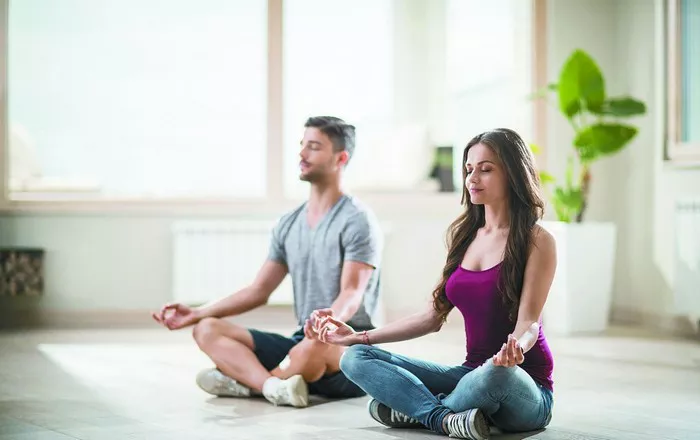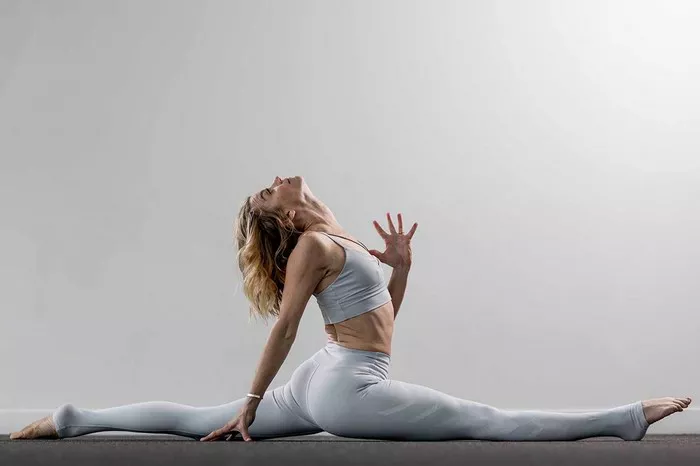Hatha Yoga is one of the most well-known branches of yoga in the modern world, widely practiced for its physical and mental health benefits. It serves as a foundation for many other forms of yoga, particularly in the West, where it is often used interchangeably with yoga as a whole. However, when we explore the roots of Hatha Yoga, we uncover a broad range of variations, each with its distinct features and effects on the body and mind. In this article, we will explore the different types of Hatha Yoga, providing an in-depth look at their origins, purposes, and benefits.
1. Introduction to Hatha Yoga
Before diving into the types of Hatha Yoga, it is important to first understand the essence of what Hatha Yoga represents. The term “Hatha” comes from two Sanskrit words: ha, meaning “sun,” and tha, meaning “moon.” In yogic philosophy, this represents the balancing of opposing forces—physical strength and flexibility, effort and ease, the active and passive energies within the body. In this sense, Hatha Yoga is a practice designed to harmonize these energies, creating a sense of balance and well-being.
Historically, Hatha Yoga was developed by sages in ancient India, notably as a method to prepare the body for deep meditation and spiritual awakening. It combines a range of physical postures (asanas), breathing exercises (pranayama), and meditation practices to strengthen the body and calm the mind. Over time, different schools and traditions of Hatha Yoga have evolved, each emphasizing different aspects of this ancient system.
2. The Core Elements of Hatha Yoga
Though the types of Hatha Yoga can vary widely, most forms of Hatha Yoga share a few core elements:
- Asanas (Physical postures): These are the specific body poses that are designed to improve strength, flexibility, and balance. Each asana has specific benefits, targeting different areas of the body and mind.
- Pranayama (Breathing exercises): Pranayama involves controlling the breath to enhance the flow of energy (prana) throughout the body. This is crucial in Hatha Yoga because conscious breathing helps deepen the connection between body and mind.
- Meditation and Relaxation: The ultimate goal of Hatha Yoga is to bring about mental clarity and inner peace. Practitioners are often encouraged to meditate or practice deep relaxation after physical movements, promoting mental stillness.
3. Different Types of Hatha Yoga
Over the centuries, Hatha Yoga has evolved and branched into several styles, each with unique characteristics and emphases. Let’s take a closer look at some of the most prominent forms.
Traditional Hatha Yoga
Traditional Hatha Yoga is the classical form, where the primary focus is on preparing the body for deeper meditation. It involves the practice of both physical postures and breath control techniques. This form of Hatha Yoga is often slow-paced and gentle, with the goal of achieving balance, relaxation, and mental clarity.
Key Features:
- Focuses on traditional poses and sequences, such as Tadasana (Mountain Pose), Savasana (Corpse Pose), and Adho Mukha Svanasana (Downward-Facing Dog).
- Emphasizes long-held postures with conscious breathing.
- Aims for the purification of body and mind.
Benefits:
- Ideal for beginners.
- Helps build foundational strength and flexibility.
- Encourages mindfulness and stress reduction.
Iyengar Yoga
Founded by B.K.S. Iyengar, this form of yoga is a more precise and methodical approach to Hatha Yoga. Iyengar Yoga is characterized by its focus on alignment, detailed instructions, and the use of props such as blocks, straps, and blankets. It emphasizes the importance of achieving optimal alignment in each pose, allowing for the proper distribution of physical energy and ensuring safety, especially for beginners.
Key Features:
- Focus on alignment and precision in each pose.
- Use of props to help with alignment and make poses more accessible.
- Poses are often held for longer periods of time.
Benefits:
- Helps improve posture, flexibility, and strength.
- Excellent for those with injuries or physical limitations.
- Promotes balance, coordination, and concentration.
Ashtanga Yoga
Ashtanga Yoga, developed by K. Pattabhi Jois, is a more dynamic and physically demanding style of Hatha Yoga. It follows a set series of poses that are performed in a specific order and linked together through breath. This form of yoga is often described as a moving meditation because the focus on breath synchronizes with movement, creating a continuous flow.
Key Features:
- A structured sequence of postures, typically divided into primary, intermediate, and advanced series.
- Dynamic flow between poses, synchronized with breath (vinyasa).
- A strong emphasis on internal heat generation through Ujjayi breath.
Benefits:
- Improves strength, stamina, and flexibility.
- Promotes detoxification through sweating.
- Encourages mental focus and discipline.
Vinyasa Yoga
Vinyasa Yoga is often considered a form of flowing Hatha Yoga, where movement and breath are synchronized in a fluid sequence of poses. Unlike Ashtanga, Vinyasa Yoga does not follow a fixed sequence, allowing for more creativity and variation in the practice. It is typically faster-paced than traditional Hatha Yoga and often incorporates sun salutations (Surya Namaskar) to warm up the body.
Key Features:
- Flowing sequences of postures connected by breath.
- Less rigid structure compared to Ashtanga.
- Emphasis on fluid movement and coordination between breath and body.
Benefits:
- Builds strength and flexibility.
- Improves cardiovascular fitness.
- Encourages mindfulness and body awareness.
Kundalini Yoga
Kundalini Yoga is a more spiritual and energetic form of Hatha Yoga. It focuses on awakening the dormant spiritual energy (Kundalini) at the base of the spine. The practice combines physical postures, breathwork, chanting, and meditation to activate the energy centers (chakras) of the body, with the ultimate goal of reaching a state of heightened awareness and spiritual awakening.
Key Features:
- Incorporates kriyas (specific sets of exercises) designed to activate energy.
- Use of breathwork, mantra chanting, and meditation.
- Strong focus on energy flow and emotional release.
Benefits:
- Enhances spiritual growth and self-awareness.
- Promotes emotional healing and release of blockages.
- Improves physical strength and flexibility.
Sivananda Yoga
Sivananda Yoga is a traditional form of Hatha Yoga that is based on the teachings of Swami Sivananda. This style places emphasis on the five principles of yoga: proper exercise (asanas), proper breathing (pranayama), proper relaxation, proper diet, and positive thinking/meditation. Sivananda Yoga classes typically follow a set structure, starting with pranayama, followed by a series of asanas, and finishing with a period of relaxation.
Key Features:
- A balanced approach that includes asanas, pranayama, relaxation, and meditation.
- Focus on the integration of mind, body, and spirit.
- Structured class format, typically with 12 key asanas.
Benefits:
- Enhances mental clarity and emotional stability.
- Increases flexibility and muscular endurance.
- Promotes overall health and well-being.
Bikram Yoga
Bikram Yoga, also known as “Hot Yoga,” is a specific style of yoga that is practiced in a heated room (around 105°F or 40°C). It follows a fixed series of 26 poses and two breathing exercises, performed in a precise order. The heat is said to help detoxify the body, increase flexibility, and promote deeper muscle engagement.
Key Features:
- Fixed sequence of 26 postures.
- Performed in a hot, humid environment.
- Focus on sweating to eliminate toxins.
Benefits:
- Improves flexibility and strength.
- Supports detoxification through sweating.
- Enhances mental clarity and focus.
Restorative Yoga
Restorative Yoga is a gentle and soothing form of Hatha Yoga that focuses on relaxation and recovery. It involves long-held, supported poses, often using props like blankets, bolsters, and blocks to allow the body to relax deeply. The emphasis is on slowing down the nervous system, relieving stress, and promoting deep rest.
Key Features:
- Gentle poses held for extended periods of time.
- Extensive use of props to support the body.
- Focus on deep relaxation and restoration.
Benefits:
- Reduces stress and anxiety.
- Promotes relaxation and improves sleep quality.
- Enhances flexibility and restores energy.
Conclusion
Hatha Yoga is a diverse and multifaceted practice that offers something for everyone, whether you are a beginner or an experienced practitioner. From the dynamic sequences of Ashtanga Yoga to the meditative stillness of Restorative Yoga, each type of Hatha Yoga serves a unique purpose and can cater to a variety of physical, mental, and emotional needs.
By understanding the different types of Hatha Yoga, practitioners can make informed decisions about which style suits their individual goals, lifestyle, and preferences. Regardless of the style you choose, the ultimate aim of Hatha Yoga is to bring harmony and balance to the body and mind, providing a foundation for physical health, mental clarity, and spiritual growth.
Related Topics:




















